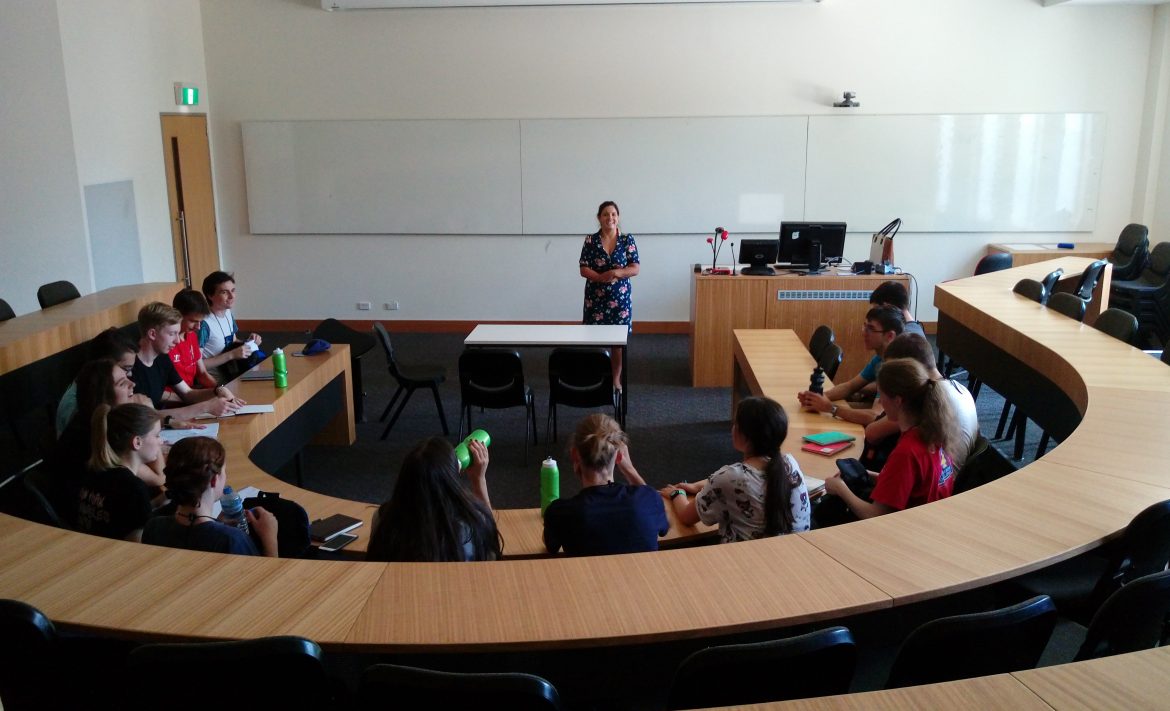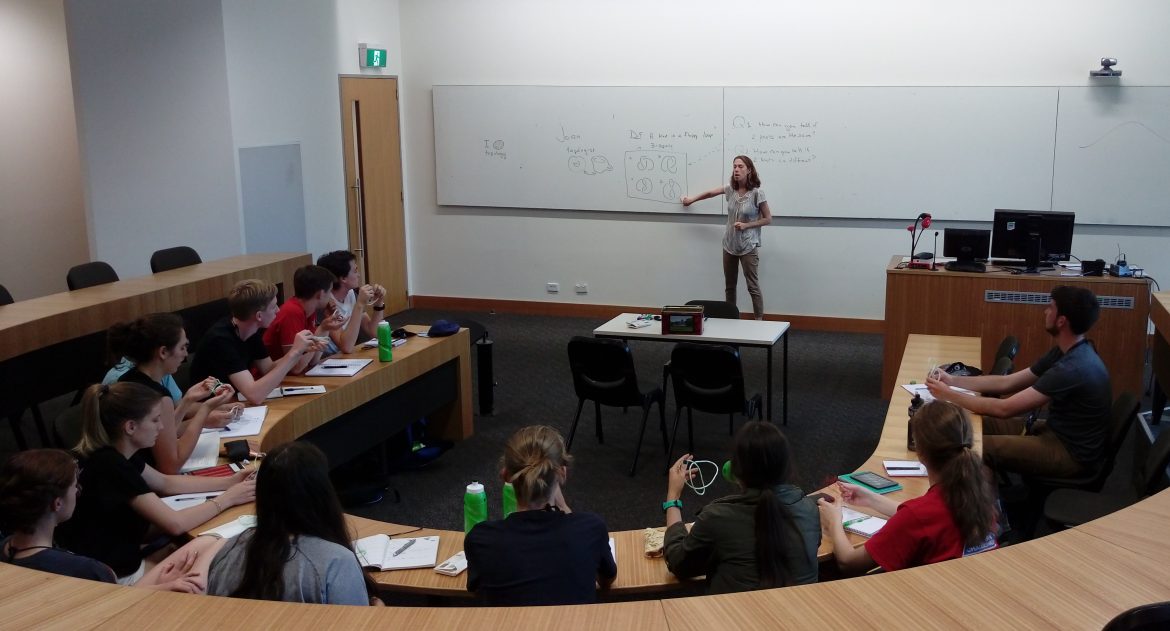Students in the Lovelace interest group for NYSF 2017 Session A were treated to a captivating mathematics lecture, presented by three members of the Mathematical Sciences Institute at the Australian National University.
The first presenter, Chaitanya (Chenni) Oehmigara is a PhD student at the ANU. Chenni is a computational mathematician, she is currently working on modelling gravitational waves that are produced by binary black hole systems – which is where two black holes orbit each other. You can find out more about gravitational waves here.

Chaitanya Oehmigara lecturing the Lovelace interest group about gravitational waves
Modelling binary black holes requires eight parameters, so any attempt to solve this problem by brute force computation is very difficult. Chenni is trying to solve this problem in her research by using mathematical techniques to determine ranges for these parameters, thereby reducing computation time significantly.
Chenni’s research is applicable to other scenarios, such as modelling of flash floods and in mining resource predictions.
Dr Joan Licata’s research takes the age-old adage “how long is a piece of string” to the next level. Her presentation focused on knot theory, the most basic form of which is the study of one-dimensional floppy string loops in three dimensional space. Knot theory in three dimensional space has many applications, including the unscrambling of DNA strands and potentially string theory.

Dr Joan Licata teaching students about three-dimensional knot theory
Joan’s presentation focused on proving similarities and differences between knots, and the concept of rational knots. Joan provided the students with their own knots to investigate and determine whether two knots were different, identical, or reflections of each other.
She then demonstrated how you can make your own knot based on a simple fraction, using turns and rotations to construct a complex structure.
If you want to find out more about Dr Licata’s past and present research, click here.
The lecture was concluded with a presentation by Dr Brett Parker, who is interested in mathematical physics, geometry, topology, and string theory. His part of the presentation focused on contemplating infinity. Brett used the famous Hilbert’s Hotel paradox as inspiration.
Picture this, a hotel with a countably infinite number of rooms, where each room has an occupant. The question is, can Hilbert fit another guest into his hotel?
Brett then extended the paradox. A bus of infinite length with a countably infinite number of passengers arrives at the hotel, can Hilbert assign a room to each passenger? Can Hilbert find rooms for a countably infinite number of infinitely long buses each full with a countably infinite number of passengers?
The answer to the above three questions is, surprisingly, yes. An explanation is provided in this video.
Find out more about Dr Parker’s past and present research here.
The students in the Lovelace interest group were absolutely fascinated by the lecture, and after the lecture finished they seemed to have infinitely many questions for the three presenters.
By Daniel Lawson, NYSF 2017 Session A Communications Intern and NYSF 2015 Alumnus.